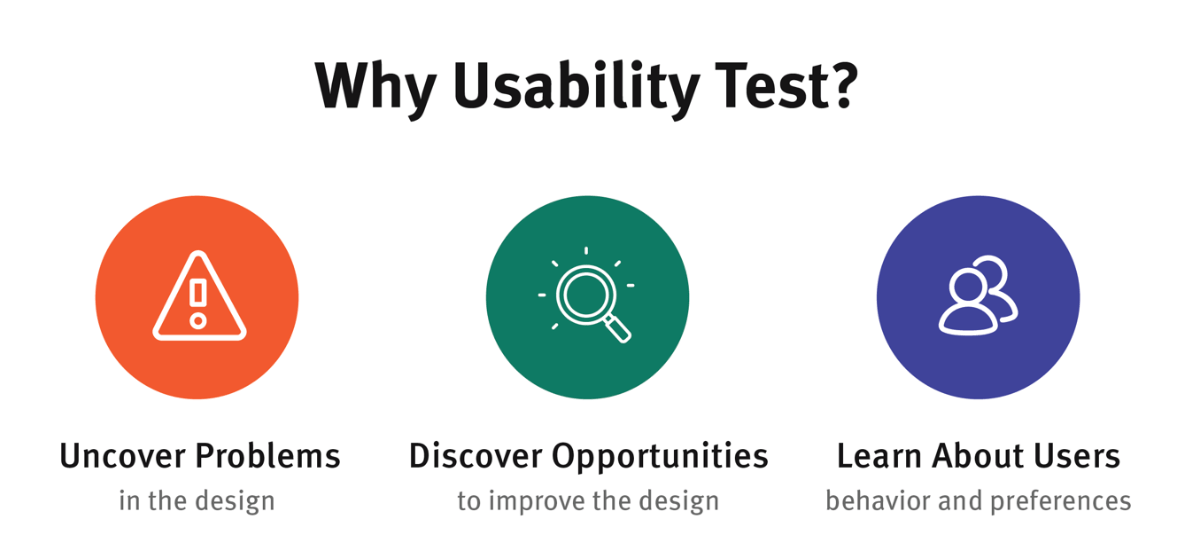It can be hard to figure out why customers buy from a website and what turns them off. Did they buy because your buyer path through your website was done well, and they were ready to click the Buy button? Or were they turned off by something simple like your font choice because it was hard to read on their smart phone?
To find out the answer, you’ll need to create some A/B tests for your website. But not superficial ones that look only at the efficiency of a font or button text. We’re talking about some seriously meaningful A/B tests that dig deeper into your visitors’ and customers’ motivations, likes, and wants. Only then will you gain the right insight about your website and be able to make the changes that’ll increase conversions for you.
So, where do you find the solid rationale or hypothesis that’ll be the foundation for these A/B tests? Let’s take a look at some of the undiscovered sources of data that can help you create meaningful A/B tests.
1. Search Queries Performed By Your Website Visitors
The website search bar is a great tool for visitors to find products and information quickly. It’s also a great source of A/B test ideas for you. Using the top search terms on the site, you can create a series of A/B tests on a regular basis to see which products you should be featuring. Or to see what new content you need to create. More often than not, you may need to change the search algorithm entirely based on what you’re seeing.
To track your internal searches, you’ll need a good tool. Searchblox, Findberry, and of course Google Site Search, all offer good internal site searching capabilities, including the all-important reporting and metric features.
Here’s An Idea: Test Your Website Search Feature!
Don’t forget that you can run tests to see if improving your website search feature helps your visitors complete goals. Testing website search bars can produce huge wins for eCommerce and marketplace style sites. Here are a few ideas to test:
- Speed – The snappiness of your website search feature can make query hunting a pleasure instead of a frustration for your visitors. Even though this may seem a like a no-brainer to improve and not require testing – it’s still worth knowing how much an improvement in speed results in happier customers. You may find improving your site speed across the board results in significantly higher conversions. So much so, that improving website speed becomes a company priority.
- Results Layout – Are your results easy to read? Are they too cluttered? Testing variations of your search results is a great place to start. It could take several iterations and months of work, but the payoff can be worth it.
- Number of Results – This is usually a fairly simple test to run. Are paginated results a nuisance for your visitors? Perhaps by reducing the number of pages or results, your customers will find what they’re looking for faster.
2. Customer Service Tickets
Information direct from your customers can help you with so much of your marketing strategy, but not if it’s all in one giant pile. You’ve got to be able to sort through your customer service tickets easily and quickly in order to find that nugget to test with.
Start out by categorizing the tickets; for example, one category for checkout issues, another for pricing questions, and so on. Then use these categories to identify common complaints and issues.
While working with Conversion Rate Experts, Crazy Egg wanted to gain a deeper understanding of what makes their buyers buy and not buy their products. They discovered a number of insights that helped them refine their website content and increase their own conversions. For example, they learned that Crazy Egg website visitors:
- were unclear about how heatmaps worked,
- were unsure of what reports Crazy Egg would generate for their own websites, and
- thought that Crazy Egg had fewer features than some of their competitors.
Through this work, Conversion Rate Experts increased Crazy Egg’s conversions by 30%, and with a website page that was 20 times as long as the control, but that’s another story. Read the full case study from Conversion Rate Experts here.
To use this data for your next A/B test, ensure you’ve got a tight relationship between your marketing and customer service teams. This helps you stay on top of any issues that pop up regularly, and gives your customer service team a way for them to test out things they’re dealing with constantly too (hypotheses you might not have thought of yet.)
3. Public Feedback From Your Audience
Seeing how quickly people complain about brands on social media can make any marketer wary of looking at public feedback for any length of time, but you should take the time to look at it. This is data right from the mouths of your audience: both prospects and current customers. They can be a goldmine of ideas for A/B test ideas, as well as the genesis of new hypotheses to test out.
Sunshine.co.uk is a UK-based travel agency that offers cheap vacations was able to double their conversions through consistent and well-thought out audience surveys. They already got detailed information from the small percentage of customers that had issues or problems with their bookings, as they dealt with them directly. But what about the silent majority that had no issues and liked Sunshine’s service?
“We did (our) survey and one of the first questions we asked was “How would you rate sunshine.co.uk?” Chris Clarkson of Sunshine.co.uk said. “A massive number of customers were giving us 10, 9, or 8, and they were the silent majority.”
The importance of knowing that your customer base is actually happy with your service can help you narrow down your hypotheses. And that can be half the battle. By limiting the number of possible tests you can run, you can more quickly get to big wins (instead of mucking around in weeks of testing that will have little or no effect).
It’s important to ask a combination of one-click questions, like multiple-choice, and open-text field questions, in order to get more qualitative responses. The one-click responses are easy to sort through, but to really dig into the data to generate better A/B tests, you’ll need those open-text field responses where users are free to tell you anything.
Bonus Tip:
Get this information delivered to your inbox by setting up a number of online tools like a Google Alert, Social Mention, or Mention. Just like consolidating and sorting through your customer service tickets to generate more meaningful A/B tests, sorting through brand mentions online can help too.
4. Your Website Analytics
Your website analytics are a great source of information about your site visitors, but to create truly meaningful A/B tests from them, look beyond the obvious numbers.
You can start with the first-level data, like the number of returning visitors that bounce from the homepage versus the new visitors who bounce, or the percentage of users that exit your site midway through the checkout process. Then dig deeper.
For example, you could look at the average order value and find that it hovers around the threshold for earning free shipping. Increase the free shipping threshold, and you may increase the average order value.
Voices.com, an online marketplace that connects voice talent to the projects that need them, recently went through a homepage testing project as they wanted to retain their position as market leader in the voiceover marketplace. In order to develop the best testing hypothesis possible, they had to do some variance testing to determine their normal baselines. Only then could they develop their specific A/B testing hypothesis and tests.
Through this review and refining of their A/B tests, Voices.com gained 33% more signups from their homepage.
Ideas Are All Around You
Hopefully you’ve been keeping track of your customer service calls, have your previous A/B tests saved on a network drive somewhere, and know how to access your website search analytics. If you’ve only done a few of those things, add the rest to your To Do list. If you’ve not done any of it, start now.
Keeping this information around will make it easier for you in the future when you run out of new ideas to test, or when you need to create a more meaningful test hypothesis. Add it to your current testing toolbox, and you’ll never run out of ideas again.
About the Author: Ayrald Hubert is a Senior Analyst at Clutch responsible for research and analysis of web design and digital marketing agencies. Ayrald is originally from France and regularly returns to his native country during the year. In his free time, he enjoys studying up on marine life and playing soccer with his friends. Ayrald’s academic background includes a Bachelor’s Degree from Georgetown University.

















